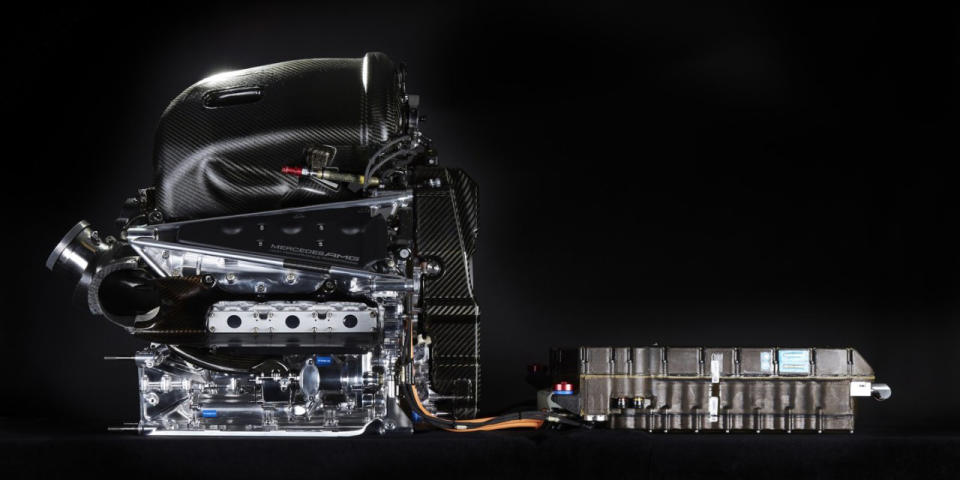How Today's F1 Engines Burn Oil for More Power

In a road car, burning oil is a bad thing, but in today's F1 cars, it's actually good. It seems counterintuitive that F1 engine designers would encourage oil burning in their engines, but if it's controlled, it can help make more power. Jason Fenske from Engineering Explained details the whole thing in his newest video.
Pictured above: Mercedes-AMG F1's 2016 power unit.
Oil burns when it's introduced into a gas-powered engine's combustion chamber, which helps generate more power at the expense of, well, oil. In F1 today, fuel is heavily regulated by the FIA, but there's a lot more flexibility with oil used. In practice, this means that teams can use certain additives to their advantage and create a more volatile fluid, helping with combustion.
The regulations also stipulate that teams are allowed to burn 0.9 liters of oil for every 100 kilometers driven, so there needs to be precise control of how much oil is burned.
Fenske explains (hah!) two strategies F1 teams can use to manage oil burn, and both involve regulating crankcase pressure. One method involves regulating crankcase pressure using system scavenger pumps of their dry-sump lubrication systems, which allows oil around the piston and into the chamber. The other involves an ECU-controlled solenoid that lets crankcase pressure escape into the engine's intake system.
But, watch his video to see how these methods explained in-depth, and the situations they're used in.
You Might Also Like

 Yahoo Autos
Yahoo Autos 